Consider the images below. What do they have in common?
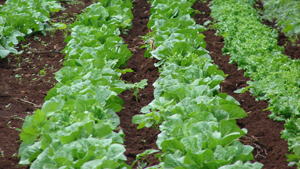
Source: Starr 070313-5576 Lactuca sativa, Forest and Kim Star, Wikimedia

Source: Beach (16301981), Andrew Hitchcock, Wikimedia
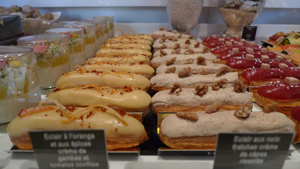
Source: Eclairs at Fauchon in Paris, MegZimbeck, Wikimedia
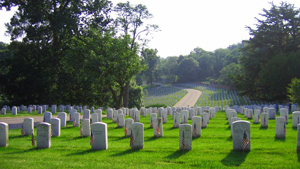
Source: IMG 3938 - Washington DC - Arlington National Cemetary, Andrew Bossi, Wikimedia
The lettuce, beach umbrellas, pastries, and tombstones are lined up in parallel rows. Picture the horizontal lines on notebook paper. They are parallel. Picture a school band marching onto the field. The band members may line up in parallel rows.
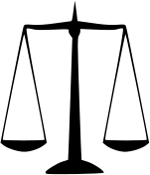
Source: US Department of Justice Scales Of Justice, USDOJ, Wikimedia
In writing, parallelism (or parallel structure) is defined as the repetition of words, phrases, clauses, and sentences that have the same grammatical structure. The purpose of parallelism is balance. The writer is indicating that two or more ideas have the same weight or importance.
Parallelism is found in all kinds of writing: novels, poems, speeches, advertisements, song lyrics, and more. Even the nursery rhymes you heard as a child contained parallelism. In the box below, you will find parallel structure in a familiar rhyme.
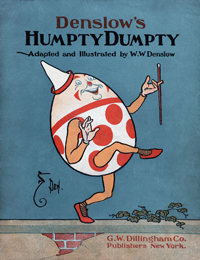
Source: Denslow’s Humpty Dumpty 1904, William Wallace Denslow, Wikimedia
Humpty Dumpty sat on a wall,
Humpty Dumpty had a great fall.
All the king’s horses and all the king’s men
Couldn’t put Humpty together again.
The first and second lines are parallel. Each one consists of a subject (Humpty Dumpty) followed by a verb phrase (sat on a wall, had a great fall). The author wants the reader to recognize that both the sitting on the wall and the falling are equally important to Humpty’s story. Notice, too, that both verbs are past tense (sat and had). In line three, the phrases all the king’s horses and all the king’s men are also parallel because they, too, are grammatically similar. Neither the horses nor the men could repair the damage to Humpty. They shared the responsibility equally as illustrated by the repetition of all the king’s followed by horses and men.
Consider the first three lines of another nursery rhyme with which you may be familiar. The parallel or grammatically similar pattern appears in red.
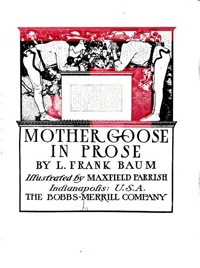
Source: Mothergooseinprose, Maxfield Parrish, Wikimedia
Monday’s child is fair of face,
Tuesday’s child is full of grace,
Wednesday’s child is full of woe, . . .
Each line begins with a possessive form of a day of the week. Each line includes the linking verb is followed by a prepositional phrase (fair of face, full of grace, full of woe).
Note that parallel structure is present in the explanation you just read in the above paragraph. The two sentences start with the subject (each line) followed by a verb (begins, includes).
Another way to understand parallel structure is to look at writing that is not parallel. In the box below you will find a sentence from the fairy tale “Snow White.” The sentence has been changed so that it is NOT parallel. Think about how you would revise it to create a parallel structure.
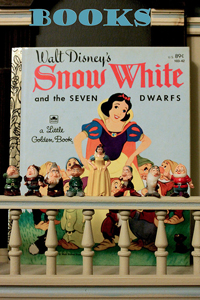
Source: Snow White and the 7 Little Guys: Book ’Em 27, ShellyS, Flickr
Soon after that, the kind queen got her wish when she gave birth to a baby girl who had skin white as snow, blood-red lips, and hair black as ebony.
The phrases (skin white as snow and hair black as ebony) are parallel. They follow a pattern consisting of a noun followed by an adjective, followed by a comparative word, followed by a noun.
| Noun | Adjective | Comparative Word | Noun |
|---|---|---|---|
| skin | white | as | snow |
| hair | black | as | ebony |
The queen valued all of the features equally. Therefore, the remaining phrase (blood-red lips) must be changed from its adjective-noun pattern to achieve balance.
| Noun | Adjective | Comparative Word | Noun |
|---|---|---|---|
| lips | red | as | blood |
The parallel sentence reads as follows:
Soon after that, the kind queen got her wish when she gave birth to a baby girl who had skin white as snow, lips red as blood, and hair black as ebony.
In this lesson, you will learn strategies for evaluating and revising an essay so that similar grammatical structures in sentences, phrases, and paragraphs are parallel.